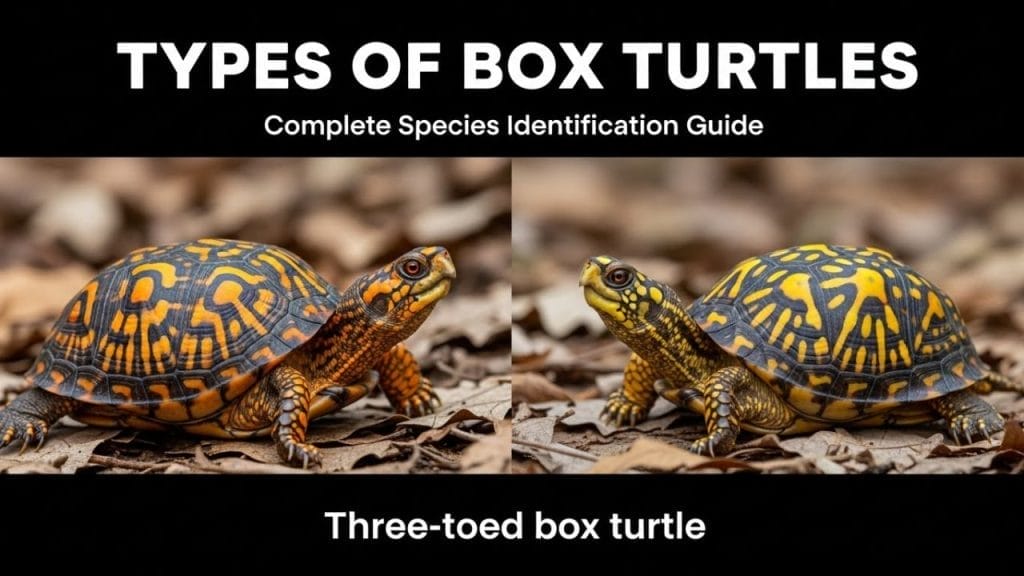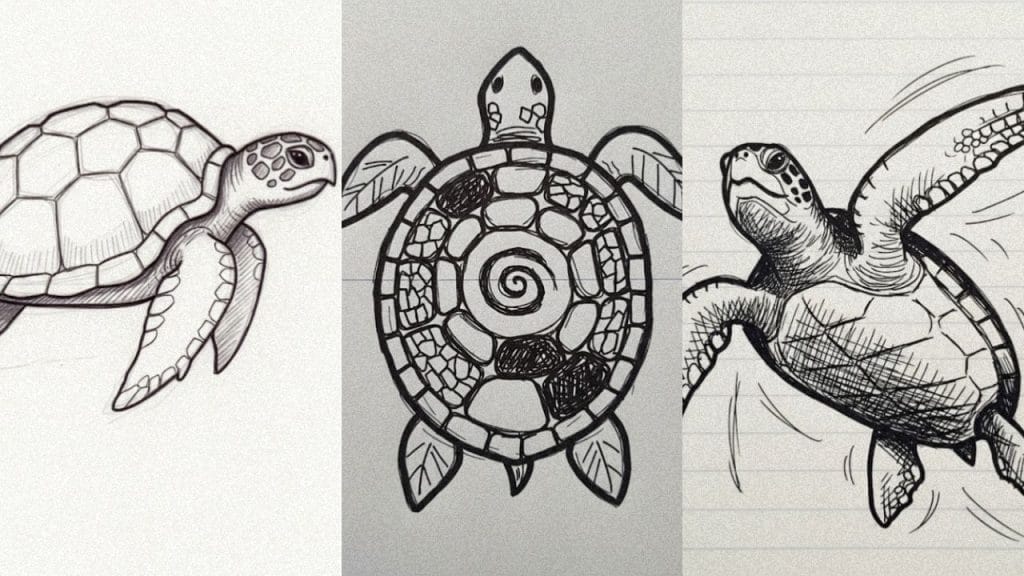10 Nutrition Secrets For Healthy Turtles: What To Feed & What To Avoid!

This post was created with help from AI tools and carefully reviewed by a human (Muntaseer Rahman). For more on how we use AI on this site, check out our Editorial Policy.
Look, I get it. You see your turtle staring at you with those prehistoric eyes, and you think “What’s the big deal? Just toss some lettuce in there and call it a day, right?”
Wrong. So, so wrong.
Feeding turtles is like playing a real-life video game where the stakes are your pet’s life. One wrong move and you’ve got a turtle with a soft shell, or worse. But here’s the thing – once you know the rules, it’s actually pretty straightforward.
Let me save you from becoming that person whose turtle ends up at the vet with metabolic bone disease.
Secret #1: Your Turtle Is Not Who You Think It Is
Here’s the first thing nobody tells you: turtles change their entire personality as they age. And by personality, I mean their diet.
Baby turtles are basically tiny carnivores. They want protein, protein, and more protein. We’re talking 60-70% animal matter when they’re young and growing.
But here’s where it gets wild – as they hit adulthood, they flip the script. Adult omnivorous turtles need roughly 50% vegetables and 50% protein. It’s like they wake up one day and decide they’re health-conscious now.
If you keep feeding your adult turtle like it’s still a baby, you’re setting them up for kidney damage and obesity. Yeah, obese turtles are a thing, and it’s as sad as it sounds.

Secret #2: Commercial Pellets Are Your Safety Net (But Not Your Only Net)
Let’s talk about those turtle pellets sitting in your pet store.
High-quality commercial pellets should make up part of your turtle’s diet because they’re packed with the exact vitamins and minerals turtles need. Think of them as a multivitamin that actually tastes good.
But here’s the catch – pellets alone will make your turtle’s life boring as hell. Would you want to eat the same nutritionally-complete meal bar every single day? No? Neither does your turtle.
The best brands veterinarians recommend include Mazuri, Zoo Med, and Fluker’s. These aren’t just random names – they’re the ones that actually put science behind their formulas.
Mix pellets with live food, fresh greens, and occasional treats. Your turtle will thank you by actually being active instead of just existing.
This Hilarious Turtle Book Might Know Your Pet Better Than You Do
Let’s be real—most turtle care guides feel like reading a textbook written by a sleep-deprived zookeeper.
This one’s not that.
Told from the snarky point of view of a grumpy, judgmental turtle, 21 Turtle Truths You’ll Never Read in a Care Guide is packed with sarcasm, sass, and surprisingly useful insights.
And hey—you don’t have to commit to the whole thing just yet.
Grab 2 free truths from the ebook and get a taste of what your turtle really thinks about your setup, your food choices, and that weird plastic palm tree.
It’s funny, it’s honest, and if you’ve ever owned a turtle who glares at you like you’re the problem—you’ll feel seen.
Secret #3: Leafy Greens Are Non-Negotiable
Remember when your mom said “eat your greens”? Well, your turtle’s mom would say the same thing if turtles had that kind of relationship with their parents.
Dark, leafy greens should make up the largest part of an adult turtle’s vegetable intake. We’re talking about:
- Collard greens
- Mustard greens
- Dandelion greens (yes, from your yard – just make sure they’re pesticide-free)
- Kale
- Turnip greens
Here’s what you need to avoid: iceberg lettuce and celery.
These are basically crunchy water with zero nutritional value. Feeding your turtle iceberg lettuce is like giving someone a glass of water and calling it dinner.

Secret #4: The Spinach Trap (Yeah, Spinach Can Be Bad)
Plot twist: some “healthy” vegetables can actually hurt your turtle.
Spinach, Swiss chard, and beet greens contain oxalates that literally steal calcium from your turtle’s body. They bind to calcium and other minerals, preventing absorption. It’s like your turtle is eating calcium and flushing it down the toilet at the same time.
Calcium deserves special attention—read our dedicated guide on providing calcium to turtles for supplementation methods.
Does this mean never feed spinach? Not exactly. Small amounts occasionally are fine. But if spinach is a diet staple? That’s how you end up with a turtle that has metabolic bone disease.
Same goes for vegetables in the cabbage family like broccoli. They contain goitrogens that mess with thyroid function and can cause kidney or liver stones.
Moderation is key. Variety is your friend.
Secret #5: Protein Doesn’t Mean “Whatever Meat Is In Your Fridge”
Your turtle needs animal protein, but not the kind you’re thinking of.
Never feed your turtle:
- Raw chicken or ground beef (they’re loaded with foodborne bacteria)
- Dog or cat food as a staple
- Processed meats like hot dogs or lunch meat
Good protein sources include:
- Live crickets and mealworms
- Earthworms
- Small feeder fish like guppies and minnows (but not too often)
- Shrimp
Feeder fish have been implicated as carriers of parasites and bacteria, so use them sparingly. Plus, fish like goldfish contain thiaminase, which can cause vitamin B1 deficiency if fed too frequently.

Secret #6: The Avocado Murder Mystery
Let me be crystal clear about this one: avocados will poison your turtle.
Every single part of the avocado – flesh, peel, leaves, bark, seed – contains persin, which is toxic to turtles and causes severe gastric upset.
I don’t care if avocados are a superfood for humans. For turtles, they’re basically poison wrapped in green skin. Don’t test this theory. Just don’t.
Other toxic foods that should never touch your turtle’s tank:
- Rhubarb leaves (contains oxalic acid that causes kidney failure)
- Tomato leaves and vines
- Potato leaves
- Chocolate (obviously)
- Nuts (they prevent calcium absorption)
Secret #7: Fruit Is Candy, Not Health Food
Your turtle might love strawberries. Mine goes crazy for them.
But here’s the reality: fruit should make up less than 10% of your turtle’s diet. Fruit is basically nature’s candy – high in sugar, low in the nutrients turtles actually need.
Think of fruit as a treat, not a meal. Once or twice a week max.
Best fruit choices:
- Figs (actually high in calcium)
- Strawberries
- Blueberries
- Apples (remove seeds – they’re toxic)
- Cantaloupe with rind (helps keep their beak trimmed)
Fruits to limit or avoid:
- Citrus fruits (lemons, oranges) can change the pH of their digestive tract and kill good gut bacteria
- Bananas (too much potassium, too little calcium)
Understanding how turtles digest food is key to making smart nutritional choices.

Secret #8: The Calcium-Vitamin D3 Connection Nobody Explains
Here’s where turtle nutrition gets fascinating. You can dump all the calcium in the world into your turtle’s tank, but without vitamin D3, it’s useless.
Vitamin D3 helps turtles absorb calcium from their food and use it properly. Without it, you get metabolic bone disease – soft shells, deformed bones, and a miserable turtle.
How turtles get vitamin D3:
UVB light exposure – turtles need 8-10 hours of proper UVB lighting daily to produce vitamin D3 naturally. And no, sunlight through a window doesn’t count. Glass blocks UVB rays.
You need a proper UVB lamp, or your turtle is screwed.
Calcium supplementation:
Lightly dust their vegetables with calcium powder 2-3 times per week. You can also provide a cuttlebone for them to gnaw on.
But here’s the warning nobody gives you: too much supplementation can be toxic and even fatal. If you’re feeding quality pellets that already contain calcium and vitamins, you might not need extra supplements. Talk to a reptile vet first.
Secret #9: Feeding Schedule Matters More Than You Think
This one’s simple but game-changing.
- Juveniles (under 2 years): Feed once or twice daily
- Adults: Feed every 2-3 days
Only give them what they can eat in 15-20 minutes, then remove leftovers. Aquatic turtles are opportunistic feeders – they’ll keep eating even when full, leading to obesity.
Pro tip from someone who learned the hard way: feed your turtle in a separate container to keep the main tank cleaner. Fill a bin with tank-temperature water, let them eat and poop there, then return them to their home. Your filter will thank you.
Proper timing is as important as food choice—learn how often to feed your turtle for optimal health.
Secret #10: Variety Isn’t Just the Spice of Life – It’s Life Itself
A turtle should never eat the same vegetables their entire life – this leads to nutritional deficiencies and disease.
Imagine eating only broccoli for months. You’d develop deficiencies in nutrients that broccoli doesn’t provide. Same with turtles.
The rotation strategy:
- Offer 2-3 different types of greens at each feeding
- Add 1-2 other vegetables
- Rotate through different options weekly
This isn’t being fancy – it’s being smart. Different plants contain different nutrients. By rotating, you cover all the bases.
The Bottom Line
Feeding turtles right isn’t rocket science, but it’s not mindless either.
Get the basics right – quality pellets, dark leafy greens, proper protein sources, calcium with UVB lighting, and variety. Avoid the toxic stuff like avocados and rhubarb. Don’t overfeed. Don’t rely on fruit or iceberg lettuce.
Do this, and your turtle can live 30-40 years or more. Mess it up, and you’re looking at vet bills, shell deformities, and a shortened lifespan.
Your turtle is counting on you to not be lazy about this. They’re literally imprisoned in whatever habitat you provide. The least you can do is feed them properly.
Now get out there and make your turtle the healthiest, most vibrant little dinosaur on your block.

About Author
Muntaseer Rahman started keeping pet turtles back in 2013. He also owns the largest Turtle & Tortoise Facebook community in Bangladesh. These days he is mostly active on Facebook.











